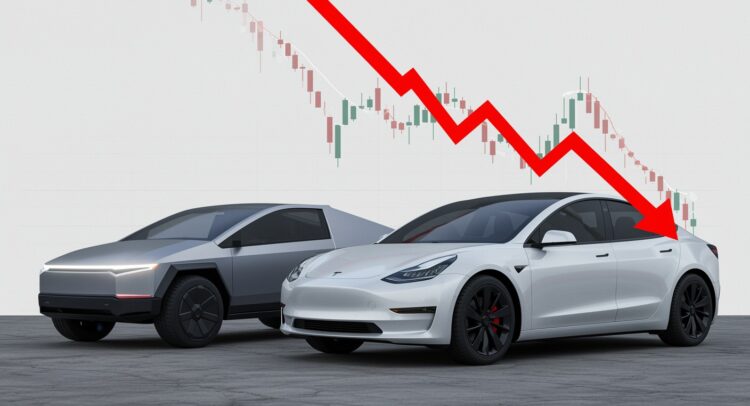Understanding Tesla Share Price: Key Factors Driving Market Trends in 2025

As we look ahead to 2025, understanding Tesla’s share price dynamics is more crucial than ever. The electric vehicle giant has emerged as a formidable player in the automotive industry, reshaping not just how we drive but also how we perceive technology and sustainability. With innovations in battery technology, expansion in global markets, and evolving consumer preferences, several key factors are set to influence Tesla’s market trends. Investor sentiment is at an all-time high, yet volatility looms, underscoring the importance of thorough analysis. In this article, we will delve into the components driving Tesla’s share price, from economic indicators to competitive strategies, arming investors and enthusiasts alike with the insights needed to navigate this thrilling journey in the stock market. Buckle up as we explore the intricate landscape that defines Tesla’s future in the coming years!
Historical Trends of Tesla Share Price
Tesla’s stock price has experienced significant fluctuations and growth since its IPO in 2010. Initially priced at $17, the stock saw a rapid rise to $194 by 2013, driven by the launch of the Model S. By 2017, the price exceeded $300, reflecting strong quarterly earnings and the ramp-up of Model 3 production. In 2020, Tesla’s stock surged over 700%, reaching approximately $1,000 by year-end. As of April 2025, the stock price has shown continued volatility, with recent highs of $294.9 and lows of $214.2.
Key Factors Influencing Tesla Share Price
Several factors drive Tesla’s stock performance. Financial performance and earnings reports are critical, as consistent revenue growth and profitability attract investors. Expansion of production capacity and delivery numbers also play a significant role. Tesla’s ability to meet global demand through its Gigafactories directly impacts its stock price. Additionally, technological innovations, such as advancements in autonomous driving and battery technology, enhance investor confidence.
The Role of Electric Vehicle Demand in Market Trends
The increasing demand for electric vehicles (EVs) is a major driver of Tesla’s stock price. As global awareness of sustainability grows, more consumers are shifting towards EVs, boosting Tesla’s market position. Government incentives and policies supporting green energy further enhance this trend. For example, favorable regulations can boost Tesla’s sales, while changes in subsidies or stricter regulations could pose risks.
Impact of Technological Advancements on Tesla’s Valuation
Tesla’s commitment to innovation is a key factor in its valuation. Developments in autonomous driving, AI, and battery technology not only improve its products but also provide a competitive edge. For instance, the anticipated updates on Tesla’s self-driving technology in August 2024 are expected to significantly impact its long-term growth. These advancements are crucial for maintaining investor confidence and driving stock growth.
The Influence of Global Economic Conditions
Macroeconomic factors such as inflation, interest rates, and global economic health also influence Tesla’s stock performance. High inflation or rising interest rates can increase production costs and reduce consumer purchasing power, potentially slowing Tesla’s sales. Conversely, favorable economic conditions, such as low-interest rates and increased consumer spending, can support Tesla’s growth.
Competitive Landscape: How Rivals Affect Tesla’s Market Share
Tesla faces increasing competition from both new and established automakers. Companies like NIO, Lucid Motors, and traditional automakers such as General Motors are expanding their EV offerings. Tesla’s ability to innovate and stay ahead of competitors is crucial for maintaining its market share and stock price. Any loss of market share could lead to decreased investor confidence and a potential decline in stock value.
Investor Sentiment and Market Speculation
Investor sentiment and market speculation play a significant role in Tesla’s stock price. Positive market sentiment, driven by strong financial performance and bullish analyst reports, can lead to increased demand for Tesla shares. Conversely, negative sentiment or uncertainty can cause volatility. Elon Musk’s influence as CEO also contributes to market speculation, as his public statements and actions can impact investor confidence.
Future Predictions for Tesla’s Share Price in 2025
Analysts predict continued growth for Tesla’s stock price in 2025, driven by sustained demand for EVs and regulatory support for green technologies. However, the stock is expected to remain volatile due to ongoing production challenges and macroeconomic factors. Some experts predict that Tesla’s stock could reach $900 in the short term, while others forecast a more bullish trajectory with potential for even higher growth. Long-term projections suggest the stock could reach $2,000 per share within five to ten years, though this comes with inherent risks.
Conclusion: Navigating the Tesla Investment Landscape
Tesla’s stock price is influenced by a complex interplay of factors, including financial performance, technological innovation, market demand, and global economic conditions. While the company’s commitment to sustainability and innovation positions it well for future growth, investors must remain cautious due to ongoing challenges and market volatility. By understanding these dynamics, investors can make more informed decisions about investing in Tesla.